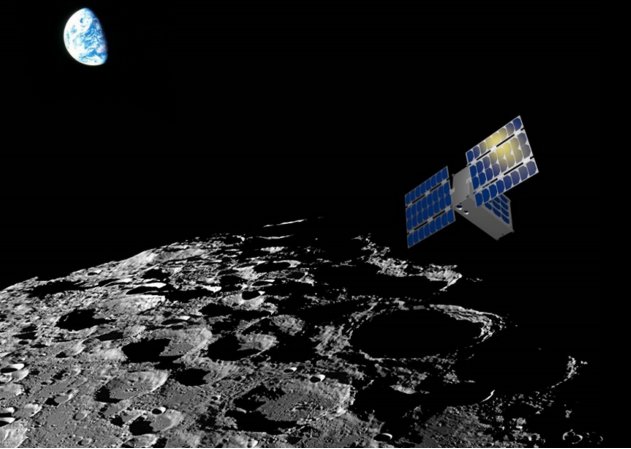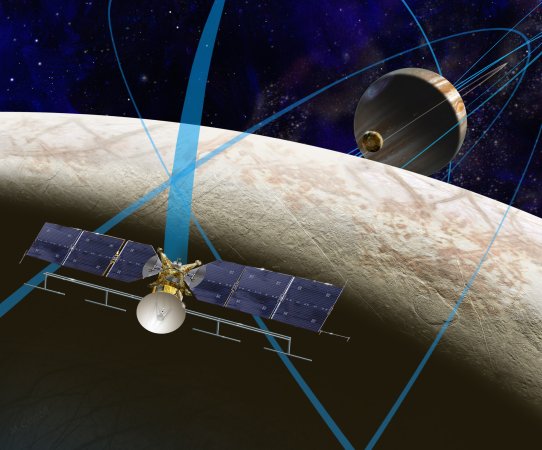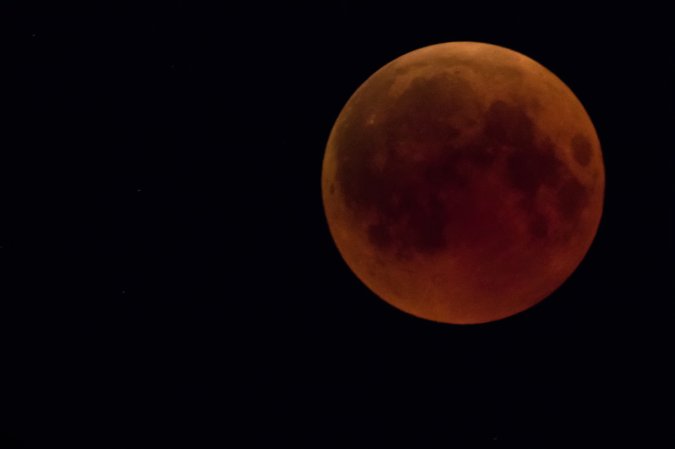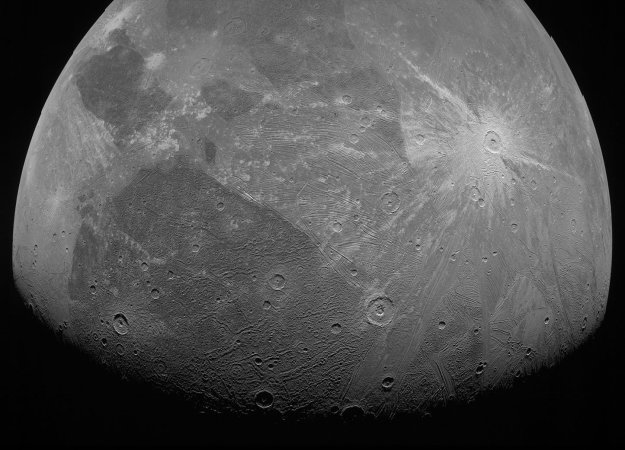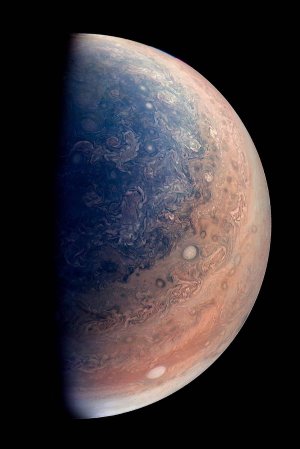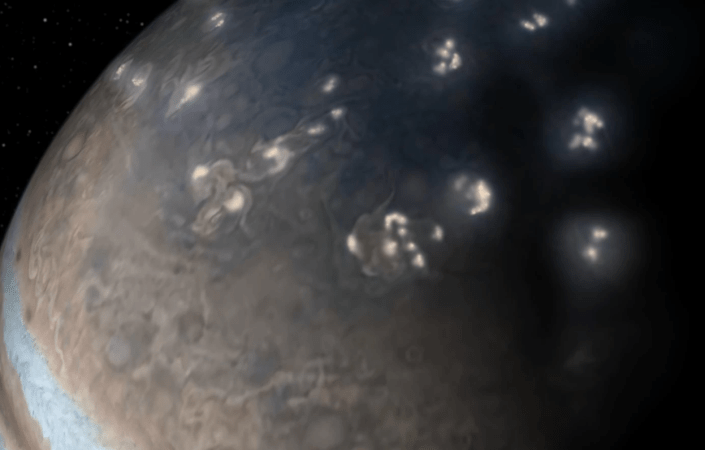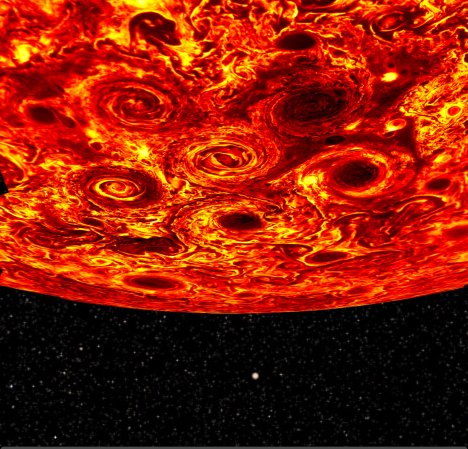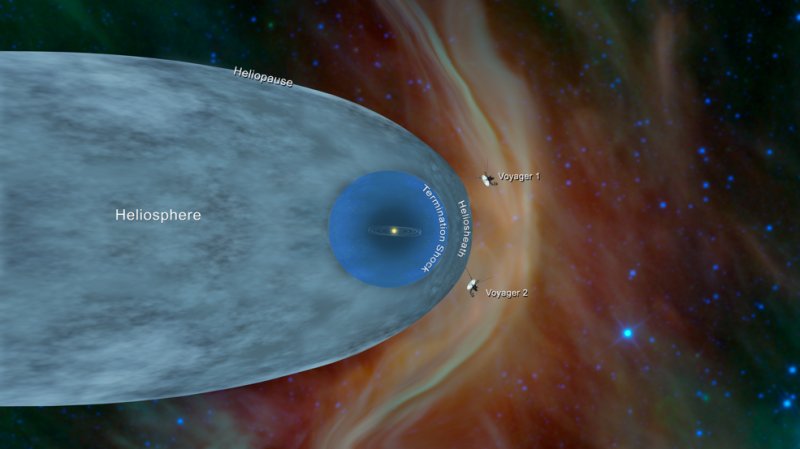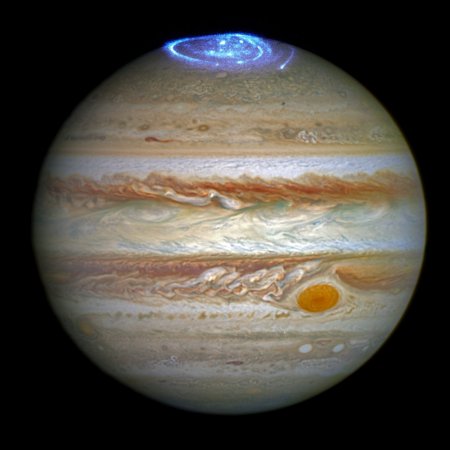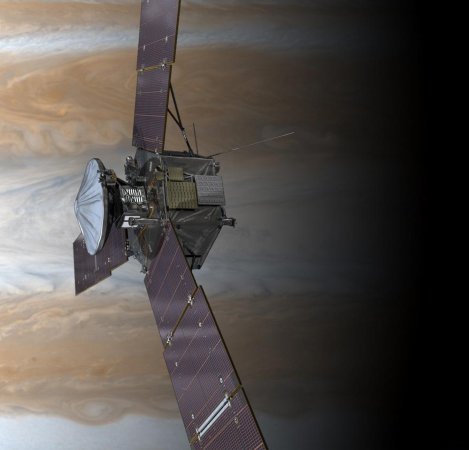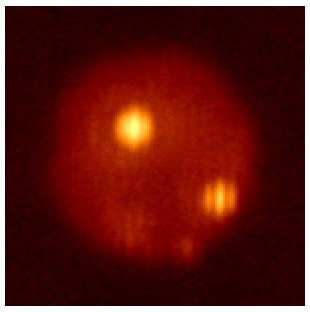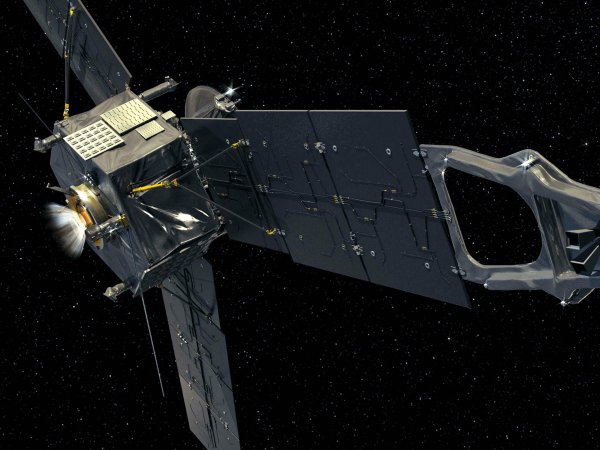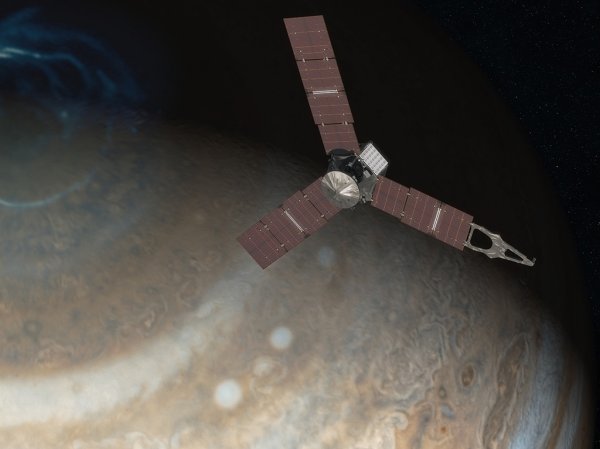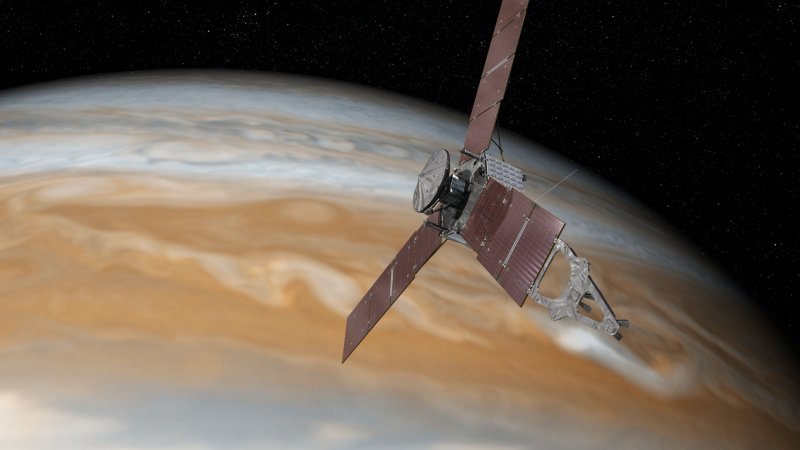

NASA’s Juno spacecraft flew by Jupiter’s moon Ganymede in June. Using data from that rendezvous, scientists have created an audio track of the sounds of Ganymede’s atmosphere.
During Juno’s 38th orbit around Jupiter, the craft soared around Ganymede and recorded the moon’s electric and magnetic radio waves. Juno sensed the waves, produced in Ganymede’s magnetosphere, with its Waves instrument. NASA scientists shifted the frequencies of those recordings to produce a 50-second track audible to human ears. The result sounds like something from Star Wars, with high chimes and whistles reminiscent of R2-D2.
“This soundtrack is just wild enough to make you feel as if you were riding along as Juno sails past Ganymede for the first time in more than two decades,” Juno Principal Investigator Scott Bolton of the Southwest Research Institute in San Antonio said in a statement. “If you listen closely, you can hear the abrupt change to higher frequencies around the midpoint of the recording, which represents entry into a different region in Ganymede’s magnetosphere.”
Analysis of Ganymede’s wave recordings are still ongoing, but “it is possible the change in the frequency shortly after closest approach is due to passing from the nightside to the dayside of Ganymede,” William Kurth, lead co-investigator for the Waves investigation, said in a statement.

Ganymede is our solar system’s largest moon, with a diameter 41 percent of Earth’s. It’s also the only moon known to have its own magnetic field.
Juno is NASA’s mission to understand how gas giants formed and their role in the solar system’s creation. Launched in 2011, Juno began orbiting Jupiter in 2016, and is the first spacecraft to penetrate the thick gas that covers the giant planet.
[Related: Juno finally got close enough to Jupiter’s Great Red Spot to measure its depth]
Using Juno’s magnetometer, NASA’s team also recently produced the most detailed map ever of Jupiter’s magnetic field. Comparing the readings from the spacecraft’s five years in the gas giant’s orbit, scientists can see that the Great Blue Spot, Jupiter’s magnetic anomaly at the equator, is drifting eastward. It’s traveling about 2 inches per second relative to the rest of the planet’s body, which means it will lap the planet in about 350 years. The Great Red Spot–the anticyclone just south of Jupiter’s equator–is drifting westward and will circle the planet in about four-and-a-half years.
“This is really the first time that we’ve seen a magnetic field getting affected by the atmosphere,” Bolton told The Washington Post. “It really demonstrates that its deep atmosphere is very dynamic, much more than people had thought.”

The team also released new images of Jupiter and its swirling storms. Jupiter’s vortices resemble those in Earth’s oceans—astronomers believe they emerge spontaneously, and researchers have no idea when, or if, these storms will dissipate. The new images and readings contribute to a more complete understanding of Jupiter and of our solar system at large. The formation of such a huge gas planet surely influenced the way our solar system pulled itself together, but Jupiter’s genesis is still poorly understood by astronomers. These data bring planetary scientists a little closer to piecing together how the mass of gas called Jupiter came to be.
“We’re trying to understand where we came from, how we got here,” Bolton told The Post. “And Jupiter is a big part of that story.”

